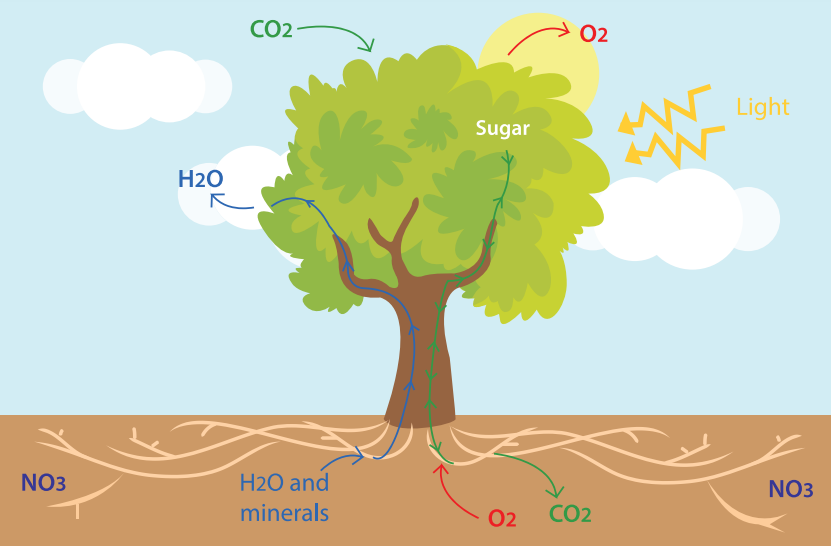The photosynthetic liquid carbon cycle
At its simplest, plants take in CO2 from the atmosphere, convert it into sugars used to build plant tissue, and the rest( 40% or so) is pumped into the ground through the root system, which drives soil biology.
Factors
Many factors can drive how much, how fast, and for how long.
Soil type, bioregion, soil health, soil management practices, and plant type are significant factors.
In general, trees are very heavy lifters when pulling down(sequestering) and storing CO2. Fast-growing perennials and lawns can do a pretty great job themselves and should not be overlooked.
After diving deep into two scientific studies, it appears that a lawn sequesters at a similar rate as a wild meadow. However, the lawn’s NET sequestration rate includes fertilizer, mowing, water, etc. The Wild meadow needs none of this and provides a similar NET carbon function without any inputs or management!
In general, trees are very heavy lifters when pulling down(sequestering) and storing CO2. Fast-growing perennials and lawns can do a pretty great job themselves and should not be overlooked.
Healthy soils and Optimizing Sequestration
We know that many plants use only 60%-70% of the CO2 they sequester for plant tissue.
This means that we have 30%-40% of the CO2 that needs a healthy system for storage.
As discussed earlier, the tree is transporting this into the soil through root exudates. It’s essentially pumping sugar into the ground to feed the fungi and the rest of the soil food web.
Sequestration requires a healthy soil system. Reasonable levels of organic matter and management systems that do not use synthetic herbicides, pesticides, or petrochemical fertilizers are the most basic starting points.
Tilling

Satellite imagery shows significant CO2 releases in the spring and sizeable CO2 capture in the growing season throughout much of the northern hemisphere’s agricultural regions. This data is consistent with tilling in the spring for annual crops and the sequestration of the growing annuals.
This data also demonstrates the destructive nature of tilling the soil.
Tilling not only releases the CO2 stored in the soil, it ultimately is destroying soil structure.
Imagine if we used our ag lands to sequester carbon without the forced emissions of spring tilling!
Please send any questions or feedback to rick@calccarbon.com

